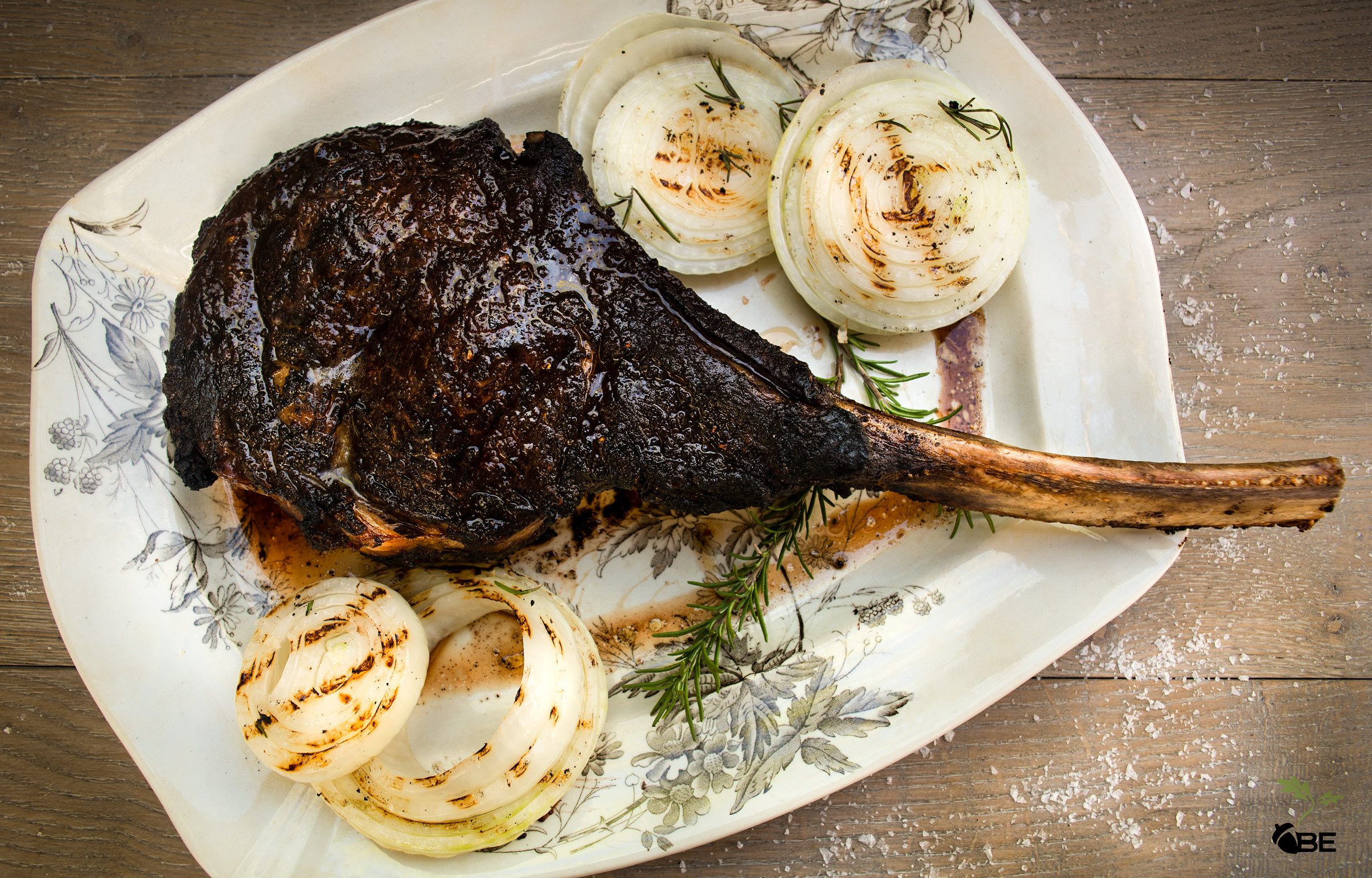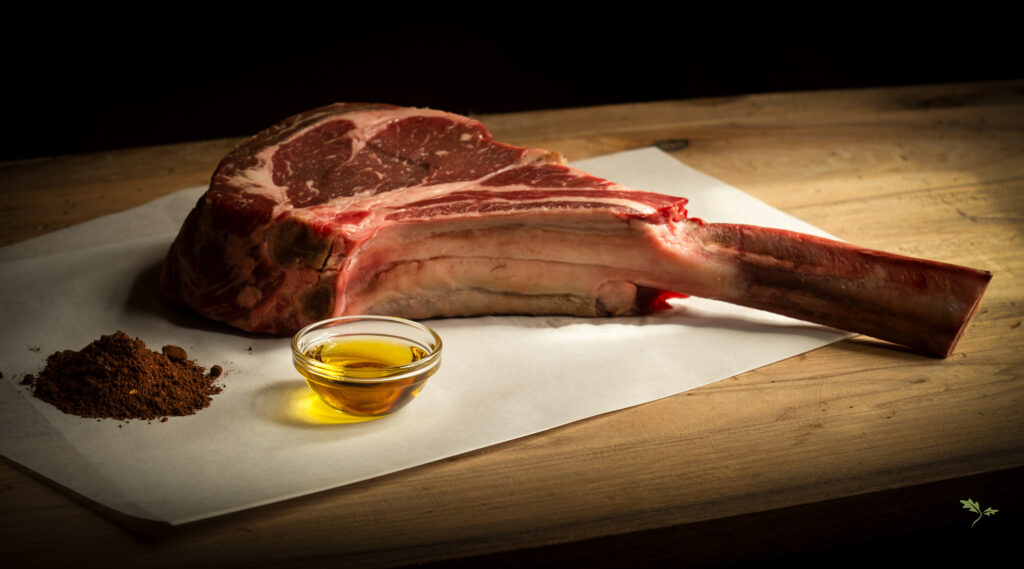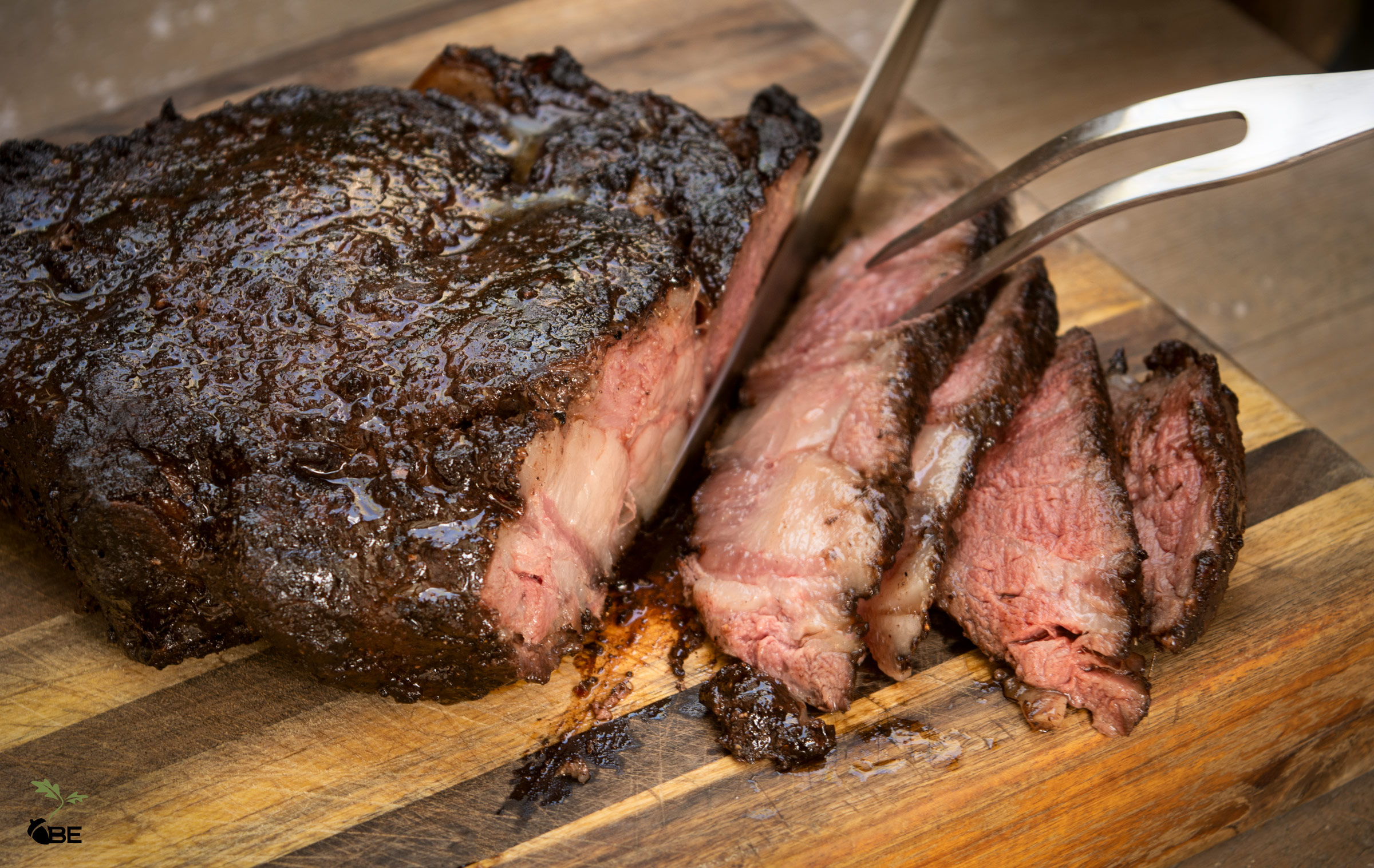
Lazy summer days beg the smells of the grill wafting through the neighborhood. Bite into this moist and tender reverse sear grilled steak with flavors heightened by the robust, bittersweet blend of dark chocolate and piquant spices.
Ingredients
For the Chocolate Spice Rub:
¼ cup Dutch-process unsweetened dark cocoa powder
2 tablespoons light brown sugar
2 tablespoons Maldon sea salt
½ teaspoon red pepper flakes
2 teaspoons ground sweet paprika
1 teaspoon freshly ground black pepper
1½ teaspoons jerk seasoning
1½ teaspoons garlic powder
For the Reverse-Sear Tomahawk Steak:
3-pound tomahawk steak with generous marbling
1 tablespoon extra-virgin olive oil
1 tablespoon butter
The Magic of Reverse Sear Grilling
Everyone wants to grill the perfect steak. Yet, so often, something sacrifices in the grilling process—tenderness, moisture, flavor—as either the interior remains uncooked or the exterior becomes overdone.
For many grill masters, reverse searing a thick steak and other heftier cuts of meat provides perfection seekers the chance to attain the perfect solution for that elusive medium-rare masterpiece. Reverse searing any thick cut of meat on the grill renders a perfect solution for a moist, evenly cooked interior while capturing the quintessential char-grilled exterior.
The reverse sear grilling uses both indirect and direct heat in a two-step process. Begin by heating only one side of the gas or charcoal grill to a slow-roasting temperature of around 300°F. The first half of the process literally involves roasting the meat by placing it on the cool, unheated grates where it can indirectly cook through the heat on the opposite side of the grill. The lowered lid provides the Dutch-oven steam infusion that helps to plump and slowly roast the meat.
When the steak reaches an internal temperature of 125°F, remove the steak from the grill to prepare the grill for the direct grilling process. Turn the grill up to very hot and fast heat, around 500°F. Sear each side of the meat to create the Maillard reaction, or caramelization of the meat’s exterior, and the usual grill marks on its surface. Because the interior cooks indirectly, chefs need only to sear the meat enough to raise the internal temperature to the desired finish, no more than 135°F to 140°F for that lovely medium-rare result.
In addition to beef, this method works well with pork, lamb, poultry, seafood, and vegetables. Remember that marbling in any meat provides more incredible tenderness, flavor, and moisture.

Method
To Prepare the Chocolate Spice Rub:
Combine the cocoa powder, brown sugar, sea salt, red pepper flakes, paprika, black pepper, jerk seasoning, and garlic powder. Set aside.
Wet or dry rubs applied directly to the raw meat not only create a wonderfully textured coating but tenderize and intensify flavor.

To Prepare the Reverse-Sear Tomahawk Steak:
Heat half the burners on the grill to 300°F.
Bring the tomahawk steak to room temperature, allowing the muscle fibers and intermuscular fat and tissue to relax. Baste the entire surface with the extra-virgin olive oil. Generously coat the oiled steak with the prepared chocolate spice rub.
Place the meat on its flat side on the indirect grates of the heated grill. Cook for 1½ hours, or until it reaches the internal temperature of 125°F. Remove the steak to a platter.
Quickly increase the heat of the grill to 500°F.
To create the exterior caramelization, sear the steak for approximately 5 minutes per side, until the internal temperature reaches approximately 135°F, or medium-rare. The dark chocolate will make the steak appear darker than the Maillard reaction (caramelization process) with typical grilled steak.
Remove the steak to the platter, top with butter, and loosely cover the platter with an aluminum foil tent. Allow the steak to rest for at least 5 to 7 minutes. Resting the meat becomes critical. Initially, the temperature will increase through carry-over cooking to 140°F, and the meat will retain its juices better than slicing into it immediately and allowing the juices to escape.
Slice across the grain of the meat to serve.

Steaks Need Rest
Avoid a dry steak, lacking in flavor and tenderness, simply by allowing a resting period. When placed in extreme heat, meat protects its moisture at its core. If cut too quickly after grilling, the juices with all their ability to flavor, tenderize, and moisten flow out of the meat and onto the platter. Following the primary carry-over cooking during the first 5 to 7 minutes of the meat leaving the grill grates, the meat will begin to cool a few degrees and the fibers will relax, allowing the flavor-punching juices to disperse themselves throughout the cut. A common grilling rule holds that any steak (and other cuts of meat or poultry) should rest 5 minutes for every inch of thickness or 10 minutes for every pound.
Recipe Created & Stylized by R. Shannon Mock & Brontë E. Mock
Photography by Robyn J. Mock

©Be the Beautiful Life All Rights Reserved

